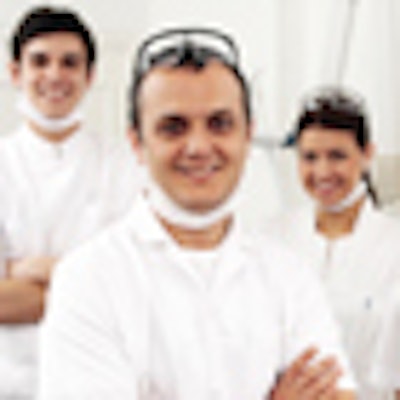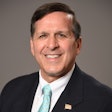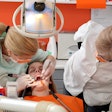
A discussion of the dental workforce can quickly narrow into a debate over the level of supervision required by dental hygienists or the quality of care provided by dental therapists.
But contributors to a special issue of the Journal of Public Health Dentistry (June 2010, Vol. 70:s1) were urged to explore workforce innovations as part of a broader reform of the entire oral healthcare system.
"There is definitely a need for change," said Elizabeth Mertz, M.A., Ph.D., a sociologist at the University of California, San Francisco who served as editor on the special issue, at the National Oral Health Conference in April.
Reforming the oral healthcare delivery system would also require a re-examination of such components as financing and insurance, Mertz noted. But considering new providers without considering the overall system in which they would work is shortsighted, she is convinced.
"We really wanted to contextualize some of these workforce issues, to get away from the discussion of tasks and what any individual provider can do on a task basis, and think about what is the system this person works in and why it is important for them to fill a particular gap in the system,'' Mertz told DrBicuspid.com. "That was the impetus for the whole special issue."
Extending IOM discussion
The special issue was conceived as a way of building upon a discussion that began last year during a landmark three-day conference convened by the Institute of Medicine (IOM) to examine the sufficiency of the oral health workforce in the coming decade.
— Elizabeth Mertz, M.A., Ph.D.,
University of California, San
Francisco
The institute, established in 1970 by the National Academy of Sciences, secures the services of eminent members of appropriate professions in the examination of policy matters pertaining to public health. Participants in the dental workforce workshop were assigned to examine inadequacies in the current oral healthcare system and explore workforce strategies for improving access to care.
The group ultimately provided a range of options for addressing systemic shortcomings but, in keeping with their charge, did not produce specific recommendations.
"What we wanted to do was to extend that discussion and really start to put some of these pieces together," said Mertz, who served on the planning committee for the IOM workshop, in a recent interview with DrBicuspid.com.
In her introduction to the special issue, Mertz framed the challenges as she sees them. She described the U.S. oral healthcare delivery system as being dominated by loosely organized, market-based private dental practices employing more than 90% of dental professionals and serving about two-thirds of the American public, mostly healthy patients who are covered by insurance or able to pay for their own services. A piecemeal safety net system is left to address the needs of the remaining one-third of the population -- typically poor, beset with multiple comorbidities, isolated, institutionalized, or uninsured, Mertz observed. Services routinely reach only a fraction of this population.
Could workforce innovations improve this care delivery model? How would workforce changes fit into an improved oral healthcare system? How would these innovations relate to wider healthcare reform efforts? Writers for the issue are asked to grapple with these questions from various perspectives.
Wayne Wendling, Ph.D., managing vice president of the ADA Health Policy Resource Center, highlighted the role of private practice dentistry in the delivery of care.
"Economics has long recognized that although there are private market solutions for many issues, not all problems can be addressed though this model," Wendling wrote. He holds out hope for what he calls "creative private-public arrangements," citing the Michigan Medicaid Healthy Kids dental program, which pays dentists at market rates to provide care to poor children.
Burton Edelstein, D.D.S., M.P.H., founding director of the Children's Dental Health Project, provided an assessment of the current limitations of safety net facilities, providers, and payment programs. He suggested that the growth of for-profit, Medicaid-only group practices hold promise and that the expansion of the existing safety net is necessary to address the needs of socially vulnerable populations. Evidence-based disease management and prevention together with health promotion are key to reducing the future needs of poor and isolated communities, he wrote.
Envisioning success
Authors Scott Tomar, D.M.D., Dr.P.H., of the University of Florida College of Dentistry, and Lois Cohen, Ph.D., a sociologist and Paul Rogers Ambassador for Global Health Research, proposed a set of key public health principles that might serve as a basis for evaluating the current system and a guide for reform efforts in their article "Attributes of an Ideal Oral Healthcare System."
Irene Hilton, D.D.S., M.P.H., of the San Francisco Department of Public Health, and Arlene Lester, D.D.S., M.P.H., of the U.S. Department of Health and Human Services, offered a strategic framework to assess the role of workforce in addressing disparities and analyzing strategies for workforce innovation. Additional articles explored strategies for addressing the oral health needs of rural communities and people living in institutionalized settings.
In a final piece, "Envisioning Success: The Future of the Oral Health Delivery System in the U.S.," Raul Garcia, D.M.D., M.M.Sc., of the Boston University Henry M. Goldman School of Dental Medicine, and colleagues stressed that systemic change must be based on sound evidence.
"Three areas critical to the successful implementation of these new workforce models are payment systems, educational programs, and policy change at the state and federal levels," the authors concluded. "Evaluation of these models must include assessments of the changes within these three domains."
In an era when healthcare delivery is shifting from a model based upon treatment to one that rewards prevention, Mertz said she believes today's pilot workforce innovations may very well prefigure the shape of the oral healthcare system of the future.
"Some of the pilots may lead to better science, how to do things better and differently," Mertz said. "The payors will follow the science."
Copyright © 2010 DrBicuspid.com















